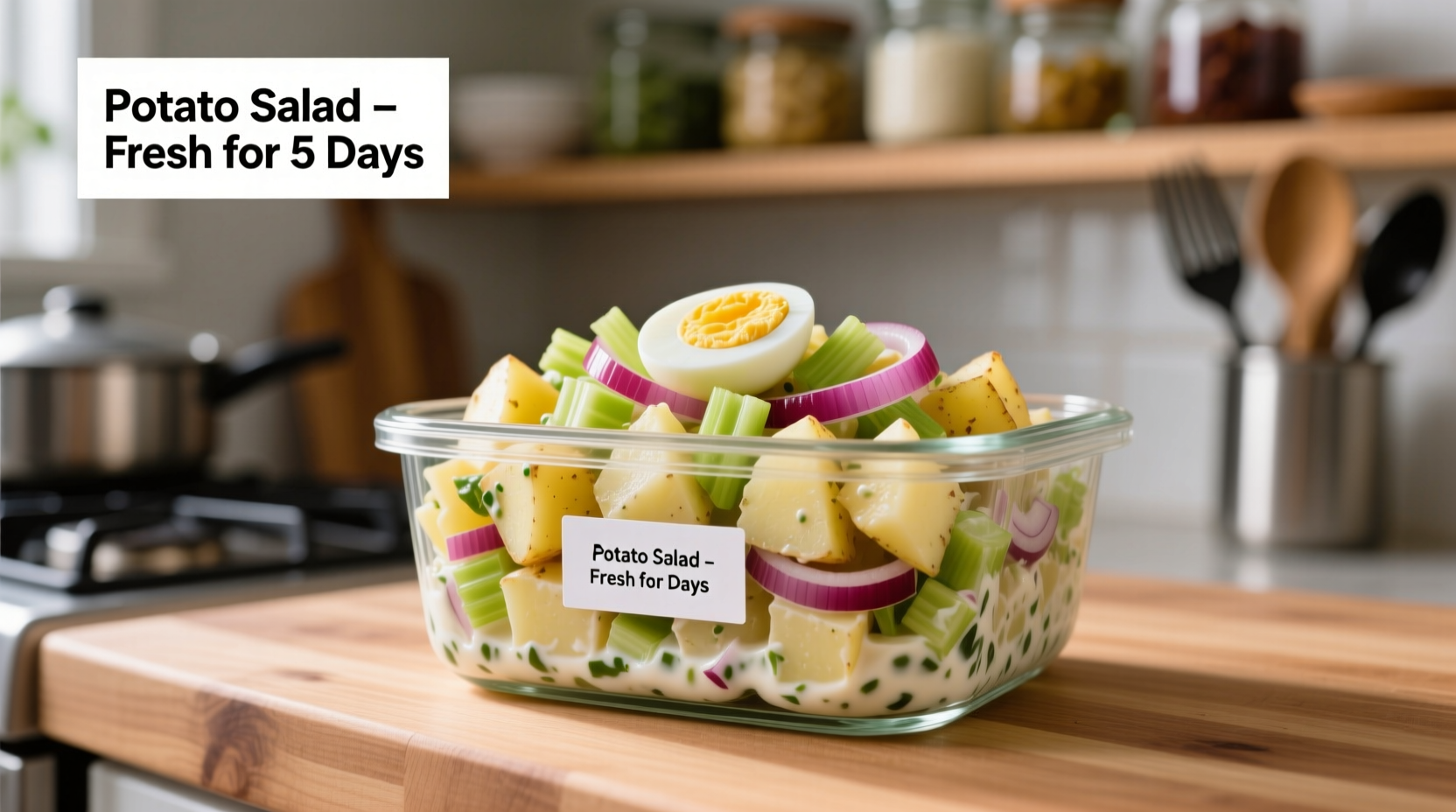Ever made a big batch of potato salad for a summer gathering only to wonder how long it'll stay fresh in your fridge? You're not alone. Millions of home cooks face this food safety dilemma every year, and getting it wrong could lead to unpleasant foodborne illness. As someone who's worked in professional kitchens for over 15 years—from Michelin-starred restaurants to bustling food trucks—I've seen firsthand how proper storage practices make all the difference between enjoying leftovers and spending days recovering from food poisoning.
The Science Behind Potato Salad Spoilage
Potato salad occupies a unique danger zone in food safety. Contrary to popular belief, it's not the mayonnaise that makes potato salad spoil quickly—it's the cooked potatoes and other ingredients that create a perfect breeding ground for bacteria like Staphylococcus aureus and Clostridium perfringens. These pathogens thrive in the "danger zone" between 40°F and 140°F, multiplying rapidly when conditions are right.
According to the USDA Food Safety and Inspection Service, cooked starches like potatoes provide an ideal environment for bacterial growth because they're moist and nutrient-rich. When combined with proteins from eggs or meat, the risk increases significantly. The FDA Food Code specifically identifies potato salad as a potentially hazardous food that requires strict temperature control.
Official Storage Guidelines You Can Trust
Based on current USDA recommendations, properly stored potato salad maintains both safety and quality for a specific timeframe:
| Storage Condition | Maximum Safe Duration | Quality Considerations |
|---|---|---|
| Refrigerator (40°F or below) | 3-5 days | Best quality within first 72 hours |
| Room temperature (below 90°F) | 2 hours maximum | Discard immediately after timeframe |
| Room temperature (above 90°F) | 1 hour maximum | High risk of rapid bacterial growth |
| Freezer (0°F or below) | 1-2 months | Texture changes upon thawing |
This data aligns with the latest FDA Food Code guidelines updated in 2023, which emphasize that perishable foods containing cooked starches and proteins require stricter time controls than many home cooks realize. University of Minnesota Extension research shows that even when stored properly, potato salad's quality begins declining after 72 hours as ingredients separate and flavors meld excessively.
Recognizing When Potato Salad Has Spoiled
Don't rely solely on the calendar—your senses provide crucial safety information. Watch for these unmistakable signs that your potato salad has gone bad:
- Visual changes: Discoloration (especially grayish tinge), excessive liquid separation, or mold growth
- Smell test: Sour, acidic, or "off" odor—even slightly different from when freshly made
- Texture issues: Slimy consistency or mushy potatoes that weren't overcooked initially
- Taste warning: If it tastes even slightly sour or unusual, spit it out immediately
When in doubt, throw it out. The USDA emphasizes that harmful bacteria often don't produce noticeable changes in food, so if you're uncertain about storage duration, err on the side of caution. Foodborne illness from improperly stored potato salad typically manifests within 1-6 hours with symptoms including nausea, vomiting, and abdominal cramps.

Maximizing Freshness: Professional Storage Techniques
As a chef who's managed food safety in high-volume kitchens, I've developed these practical strategies to extend your potato salad's shelf life while maintaining quality:
- Immediate chilling: Don't let potato salad sit at room temperature while cooling—place the bowl in an ice bath and stir frequently until it reaches refrigerator temperature
- Air-tight containers: Use glass containers with locking lids rather than plastic tubs, which can absorb odors and may not seal as effectively
- Strategic placement: Store in the main compartment of your refrigerator, not in the door where temperatures fluctuate more
- Ingredient separation: For meal prep, store dressing separately and combine just before serving to extend freshness by 1-2 additional days
Special Considerations for Different Potato Salad Variations
Not all potato salads share the same shelf life. These factors significantly impact how long your specific recipe will remain safe:
- Egg-containing versions: Add 12-24 hours to potential spoilage timeline due to additional protein content
- Bacon or meat additions: Reduce safe storage window by 24 hours compared to vegetarian versions
- Vinegar-based dressings: May extend safety window slightly (up to 6 days) due to acidic environment
- Store-bought vs. homemade: Commercial products often contain preservatives allowing 5-7 day refrigerator life
Remember that outdoor events dramatically change the equation. At picnics or potlucks, keep potato salad in a cooler with ice packs and never leave it unrefrigerated for the full 2-hour window—rotate small serving portions from the main chilled container.
Frequently Asked Questions
Here are answers to the most common questions I receive about potato salad storage:
Can you freeze potato salad to extend its shelf life?
Yes, but with significant quality trade-offs. Freezing causes potatoes to become watery and texture changes dramatically upon thawing. If freezing, store in airtight containers for 1-2 months maximum, and expect compromised texture though safety remains intact.
Does adding extra vinegar or lemon juice extend potato salad's refrigerator life?
Marginally, yes. Acidic environments slow bacterial growth, potentially adding 12-24 hours to the safe storage window. However, this doesn't eliminate risk—always follow the 3-5 day guideline regardless of acidity level.
Is it safe to eat potato salad that's been in the fridge for 6 days if it looks and smells fine?
No. Harmful bacteria like Staphylococcus can grow without visible signs or odors. The USDA explicitly states that perishable foods should never be consumed beyond 5 days in refrigeration, regardless of appearance or smell.
How does homemade mayonnaise affect potato salad shelf life compared to commercial mayo?
Homemade mayonnaise significantly reduces shelf life (to 1-2 days) because it lacks the preservatives and precise pH control of commercial products. Commercial mayonnaise-based salads follow the standard 3-5 day guideline when properly stored.











 浙公网安备
33010002000092号
浙公网安备
33010002000092号 浙B2-20120091-4
浙B2-20120091-4